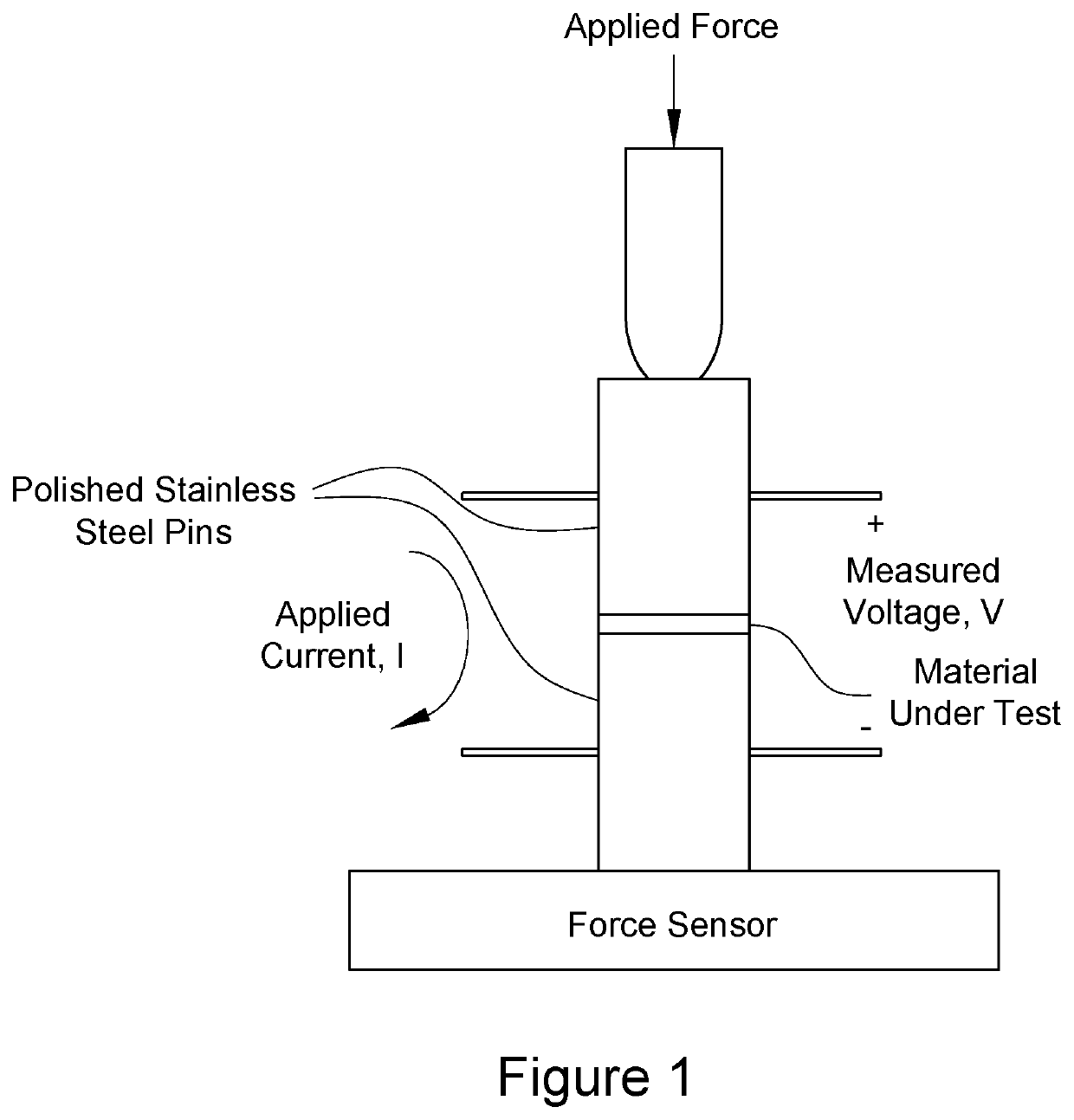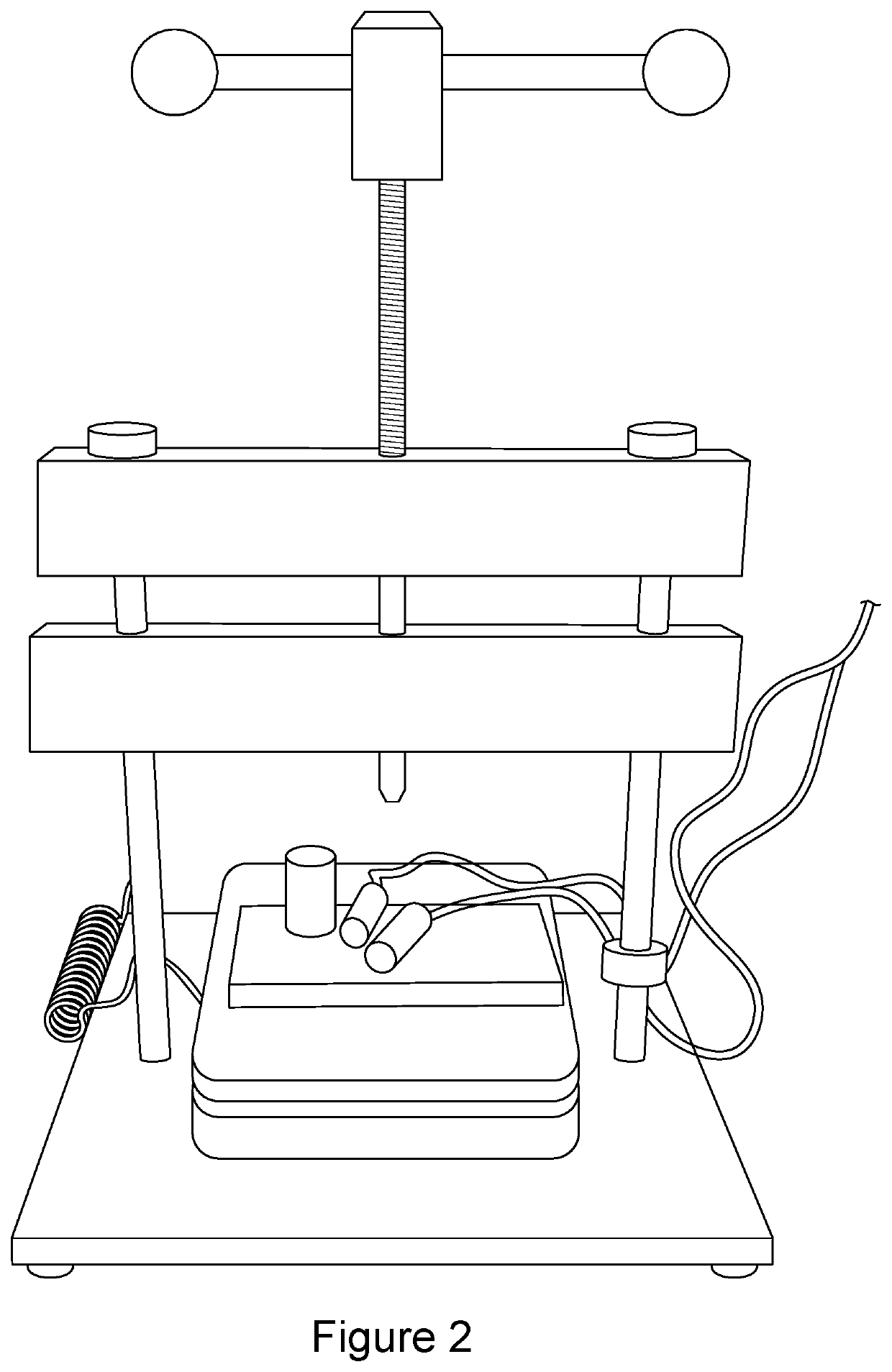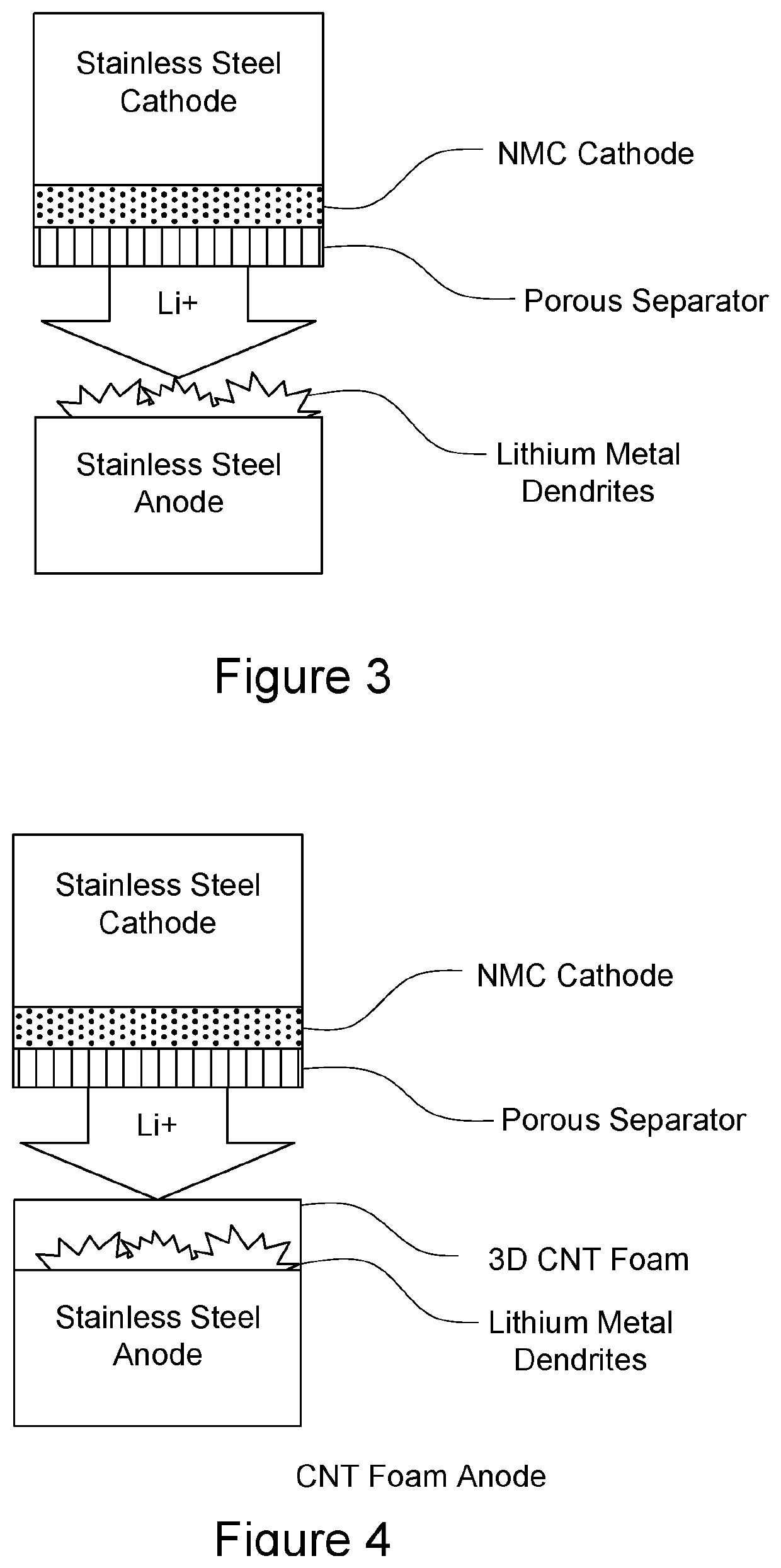Electrodes comprising three-dimensional heteroatom-doped carbon nanotube macro materials
a carbon nanotube and macro-material technology, applied in the field of electrochemical devices comprising three-dimensional heteroatomdoped carbon nanotube macro-materials, and batteries and capacitors, can solve the problems of reducing the useful life of ion batteries, limiting the effective life cycle, and low yield of mechanical exfoliation, so as to achieve excellent physical and chemical properties, long useful life, and electrical capacity.
- Summary
- Abstract
- Description
- Claims
- Application Information
AI Technical Summary
Benefits of technology
Problems solved by technology
Method used
Image
Examples
example 1
n / Comparison of Anode Performance Between Stainless Steel and 3D Foam Anodes
[0272]Development Rationale
[0273]The following examples was carried out on a three dimensional nanotube material prepared according to the teachings of U.S. Ser. No. 13 / 424,185.
[0274]The “Holy Grail” of the lithium battery industry is to create a practical lithium “metal” battery. Lithium metal has the highest energy density of any anode for both volumetric and gravimetric energy densities. Graphite as an anode material has ˜360 mAhr / g energy capacity. Lithium metal has an energy density of 3860 mAhr / g. This is not a 10-fold increase in the battery performance, rather a 10-fold increase in the anode performance. Since the anode is 30-50% of a cell volume / mass, the increase in battery performance is more in line with a 2- or 3-fold increase in battery performance, which represents a significant improvement in battery performance.
[0275]The goal is to construct a lithium metal battery structure with the 3D-CNT ...
example 2
n of 3D CNF Foams in Half-Cell Configurations Vs. Lithium Metal
[0340]The objective of this set of tests was to measure fundamental performance of the 3D CNT Foam in a half-cell configuration versus lithium metal.
[0341]The configuration of the test in a Swagelok cell is shown in FIG. 3. Current was controlled at a specified rate and the voltage profile of the cell was measured during this current flow. The lithium disk supplied as much Li as the opposing electrode can use. This allowed the anode to reach full capacity without any lithium metal plating.
[0342]To be clear, intercalation of Li+ ions cannot penetrate the side-wall of a fully intact nanotube. Similar to graphite, the Li+ ion can only penetrate at the edges of the graphene structure, whether planar or cylindrical. If there is damage at some point in the nanotube wall (branching, dislocations . . . ) then Li+ ions might have the ability to penetrate into the nanotube wall. This is also true in connection with concentric ring...
example 3
n of 3D CNF Foams in Full-Cell Configurations vs. Lithium Metal
[0366]The objective of this set of tests was to measure fundamental performance of the 3D CNT Foam in a full-cell configuration versus lithium metal.
[0367]The 3D CNF data is based on the same LCO cathode or higher performance NCM variants. To get the whole 100% increase in capacity, this compares conventional LCO / GRA to the 3D CNF foam anode with higher performance NM811.
[0368]In the graph below, commercial cells are in the area of 500 Whr / L volumetric energy density (VED). 3D CNF Foams in Full-Cell Configurations can double the capacity of a cell to ˜1000
[0369]Whr / L. This data is based on a real, commercially produced cell at 1.2 Ahr with external dimensions of 42×57×3.6 mm and high density LCO / GRA Cathode / Anode with N / P ratio of 1.1
[0370]Here in this example Conventional cathode: ˜110 um cathode is energy loading, high loading,
[0371]maximize active materials fraction in cell
[0372]Conventional anode: ˜110 um anode with...
PUM
| Property | Measurement | Unit |
|---|---|---|
| density | aaaaa | aaaaa |
| density | aaaaa | aaaaa |
| pore diameters | aaaaa | aaaaa |
Abstract
Description
Claims
Application Information
 Login to View More
Login to View More - R&D
- Intellectual Property
- Life Sciences
- Materials
- Tech Scout
- Unparalleled Data Quality
- Higher Quality Content
- 60% Fewer Hallucinations
Browse by: Latest US Patents, China's latest patents, Technical Efficacy Thesaurus, Application Domain, Technology Topic, Popular Technical Reports.
© 2025 PatSnap. All rights reserved.Legal|Privacy policy|Modern Slavery Act Transparency Statement|Sitemap|About US| Contact US: help@patsnap.com



